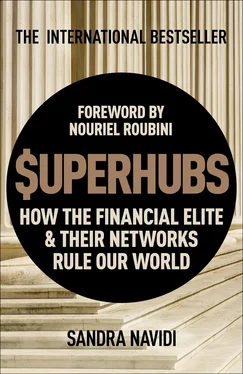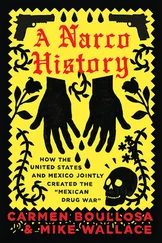Sandra Navidi - SuperHubs - How the Financial Elite and Their Networks Rule our World
Здесь есть возможность читать онлайн «Sandra Navidi - SuperHubs - How the Financial Elite and Their Networks Rule our World» весь текст электронной книги совершенно бесплатно (целиком полную версию без сокращений). В некоторых случаях можно слушать аудио, скачать через торрент в формате fb2 и присутствует краткое содержание. Год выпуска: 2017, Издательство: Hodder & Stoughton, Жанр: Старинная литература, на английском языке. Описание произведения, (предисловие) а так же отзывы посетителей доступны на портале библиотеки ЛибКат.
- Название:SuperHubs: How the Financial Elite and Their Networks Rule our World
- Автор:
- Издательство:Hodder & Stoughton
- Жанр:
- Год:2017
- ISBN:нет данных
- Рейтинг книги:4 / 5. Голосов: 1
-
Избранное:Добавить в избранное
- Отзывы:
-
Ваша оценка:
- 80
- 1
- 2
- 3
- 4
- 5
SuperHubs: How the Financial Elite and Their Networks Rule our World: краткое содержание, описание и аннотация
Предлагаем к чтению аннотацию, описание, краткое содержание или предисловие (зависит от того, что написал сам автор книги «SuperHubs: How the Financial Elite and Their Networks Rule our World»). Если вы не нашли необходимую информацию о книге — напишите в комментариях, мы постараемся отыскать её.
SuperHubs: How the Financial Elite and Their Networks Rule our World — читать онлайн бесплатно полную книгу (весь текст) целиком
Ниже представлен текст книги, разбитый по страницам. Система сохранения места последней прочитанной страницы, позволяет с удобством читать онлайн бесплатно книгу «SuperHubs: How the Financial Elite and Their Networks Rule our World», без необходимости каждый раз заново искать на чём Вы остановились. Поставьте закладку, и сможете в любой момент перейти на страницу, на которой закончили чтение.
Интервал:
Закладка:
What Dalio lacks in material pretensions, he makes up for in intellectual ones. He does not want to be seen as merely a speculator or trader, but instead—driven by the desire to make a social impact—as a philosopher and educator, explaining how the world works to make it a better place. He credits much of his success to transcendental meditation, which he practices religiously. As is typical for overachievers, he loves to pursue challenges in his quest for personal evolution, and he focuses on his mission with intense passion. Dalio developed an ideology that compares the actions of the economy, businesses, and people to the operation of machines. He identified cause-and-effect patterns and chronicled his insights in a manifesto titled Principles, in which managers who talk about subordinates behind their backs are called slimy weasels.30 When the document leaked, it created a slew of negative publicity.31 An article in New York described his rule book “as if Ayn Rand and Deepak Chopra had collaborated on a line of fortune cookies.”32 The popular Wall Street website Dealbreaker had a field day with a section that it interpreted as Dalio comparing Bridgewater to a pack of hyenas feeding on a young wildebeest.33 The Financial Times called his musings “billionaire financier drivel”34 and Dalio himself “deluded, emotionally illiterate, and weird.”35
Around the same time, reports from inside the firm began to leak. One former employee compared it to a cult, given its charismatic and isolated location. Some described the culture as bizarre, totalitarian, and demoralizing. Others characterized it as a mind-control operation and a human behavioral experiment. The stories made Bridgewater sound like the Pyongyang of hedge funds, although with much better food and compensation. According to one ex-employee, everyone gains ten pounds in the first year due to the great cafeteria and long hours in an isolated environment. All emails are monitored, and conversations as well as phone calls are taped, except for the most personal ones. Everyone can listen to the recordings, which are stored in a “transparency library.” Overhead cameras document employees’ every move. “Issue logs” and “believability matrices” track mistakes, and gossip is strictly prohibited.
It is perhaps unsurprising that in view of such comprehensive surveillance, some people might become a little paranoid. Yet even fewer employees are able to deal with the practice of “radical truth”: In the pursuit of perfection, everyone’s views are constantly challenged, questioned, and attacked in group discussions. The process of this “evidence-based meritocracy”36 is rigorous, as virtually nothing is accepted at face value. Employees are asked to check their egos at the door and make judgments unencumbered by emotion. Equipped with iPads, they have to operate an app called Pain to track negative feelings. Another app named Dot Collector polls employees on all discussions involving at least three people. Yet another app called Dispute Resolver is used to mediate conflicts, or even form tribunals where both sides submit evidence.
Dalio wants to prevent his subordinates from being hijacked by their emotions, but one wonders about their psychological well-being. All employees must constantly evaluate each other—with their “believability index” ratings hanging over their heads. With the help of Palantir Technologies’ “big data analysis” programs, former CIA and NSA officials administrate the myriad of employee data.37 The company primarily hires college graduates, many of whom initially suffer from culture shock over the constant dress-downs. Accordingly, the turnover is extraordinarily high, with at least a quarter of new hires leaving or being fired within the first eighteen months. Obviously, the environment is not for everyone, but people are still lining up to be hired for what certainly appears to be a well-compensated learning experience and a stellar reference on one’s resume.
The firm’s radical culture once contributed to a duel at the very top involving Dalio himself and his top lieutenant and handpicked successor, Greg Jensen. Dalio purportedly heard that Jensen had shared his grievances about him behind his back.38 According to the Wall Street Journal, Dalio asked the firm’s management and stakeholders committees if they believed Jensen had integrity. Jensen, in turn, asked the group to decide if Dalio was fulfilling his succession plan.39 At the time of this book’s writing, the implications of this struggle were unclear.
Planning for a future without Dalio also involves hiring parts of IBM’s Watson artificial intelligence team to perpetuate his intellectual DNA mechanically, thus decentralizing management and preserving the essence of the firm. By feeding in information about Dalio’s and other top investors’ thinking, the plan is to develop it into a decision-making tool that can learn and adapt to new information. Dalio’s rules and management style may come across as strange, but in a world where only results count, his track record is extraordinary. Investor demand proves that his monomaniacal focus has succeeded.
* * *
This chapter examined the prerequisite traits and qualities for becoming a superhub. Now that we have a profile of superhubs and the common characteristics they share, we can begin to understand why they prefer one another’s company. Many of them possess similar backgrounds and therefore trust each other more implicitly, creating a powerful network of a like-minded elite. Chapter 5 will explore why superhubs gravitate toward other superhubs and find comfort in their commonalities.
CHAPTER 5
Homophily
Similarity Breeds Connection
THE CHARITABLE SUPERHUB NETWORK: THE ROBIN HOOD GALA
Every year in May, the titans of finance unite at the grandiose Robin Hood charity gala in New York. It takes place at the Jacob Javits Convention Center, a massive, modern, nondescript building located near the Hudson River and of the sort that can be found anywhere in the world. Because the Javits Center is virtually devoid of any atmosphere, the organizers invest great effort in breathtakingly elaborate designs and decorations. The space has double the capacity of even the largest ballroom in New York City, which makes the entire event a bit overwhelming. The four thousand attendees, the technical displays, the stars, the entertainment—your head is spinning in sheer overstimulation. And before you can take it all in, the evening has ended and you must scramble to locate your driver amid the thousands of others all leaving at the same time.
Established by hedge fund manager Paul Tudor Jones III (net worth $4.3 billion) in 1988, the Robin Hood Foundation is one of the most successful charities in the financial world. Jones runs a $13 billion hedge fund, and since Robin Hood’s inception, he has raised an incredible $1.5 billion to fight poverty in New York City. The event brings in major stars ranging from Michael Bloomberg to Elton John and Lady Gaga, and of course, virtually all of the titans of Wall Street. Attendees include George Soros, Ray Dalio, Larry Fink, Ken Griffin of Citadel, Howard Lutnick of Cantor Fitzgerald, Jamie Dimon, Lloyd Blankfein of Goldman Sachs, Steve Schwarzman, and Henry Kravis of the private equity firm Kohlberg Kravis Roberts & Co. (KKR). They all lend their support; for example, in 2009 George Soros challenge-pledged $50 million to Robin Hood, meaning that the foundation would have to raise at least another $50 million for Soros’s money to be released. Robin Hood not only succeeded in matching Soros’s donation but far exceeded it. Tickets start at $3,000, and the silent auctions attract obscene amounts of money. In 2015, the event raised a jaw-dropping $101 million in one evening. Of all New York fund-raisers, Robin Hood brings in the most money. In comparison, the much-feted Metropolitan Museum of Art’s Costume Institute Benefit (the “Met Gala”) in 2014 raised “only” $12 million.
Читать дальшеИнтервал:
Закладка:
Похожие книги на «SuperHubs: How the Financial Elite and Their Networks Rule our World»
Представляем Вашему вниманию похожие книги на «SuperHubs: How the Financial Elite and Their Networks Rule our World» списком для выбора. Мы отобрали схожую по названию и смыслу литературу в надежде предоставить читателям больше вариантов отыскать новые, интересные, ещё непрочитанные произведения.
Обсуждение, отзывы о книге «SuperHubs: How the Financial Elite and Their Networks Rule our World» и просто собственные мнения читателей. Оставьте ваши комментарии, напишите, что Вы думаете о произведении, его смысле или главных героях. Укажите что конкретно понравилось, а что нет, и почему Вы так считаете.












